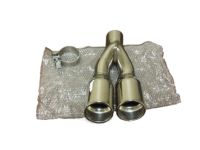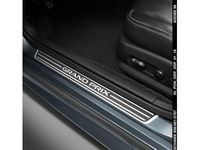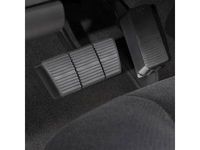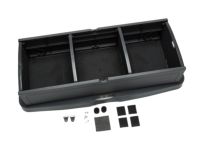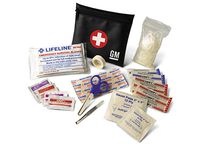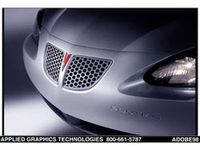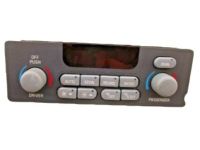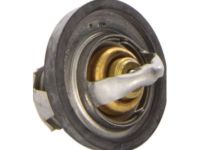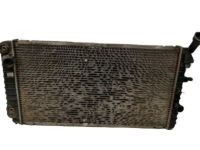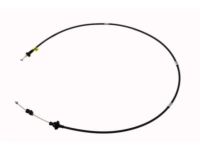Why choose GMPartsGiant
- Large Inventory
The best site to buy Pontiac Grand Prix genuine parts for years has been GMPartsGiant.com. We're the best online parts and accessory store for your Pontiac Grand Prix. GMPartsGiant.com offers a large parts and accessory inventory to cover all your vehicle's repairs. Feel free to browse through our genuine Pontiac Grand Prix parts and accessory catalog to find all your vehicle's needs.
- Fast Shipping Times
All of our Pontiac Grand Prix auto parts and accessories are expedited directly from verified dealers and backed by the manufacturer's warranty. Our experienced team ensures the orders are packed to provide quick transit times. The majority of the orders are shipped out within a couple of business days to get the parts out to you as fast as possible.
- Low Prices
Our low prices say it all. You can rest assured that you will always receive unbeatable prices on OEM Pontiac Grand Prix parts. Our giant inventory is beyond compare and has everything you need at an extraordinary value not found anywhere else. Whether you're restoring an old vehicle or upgrading the performance of your vehicle you can count on the quality of our products without hurting your bank account.
Popular Genuine Pontiac Grand Prix Parts
- Engine Parts View More >
- Front Suspension, Steering Parts View More >
- Fuel System, Exhaust, Emission System Parts View More >
- Brakes Parts View More >
- Transmission - Automatic Parts View More >
- Frames, Springs, Shocks, Bumpers Parts View More >
- Cooling System, Grille, Oil System Parts View More >
- Interior Trim, Front Seat Trim, Seat Belts Parts View More >
Shop Genuine Pontiac Grand Prix Parts with GMPartsGiant.com
The Pontiac Grand Prix, offered in both coupe and sedan variants, first made its debut in 1962 as Pontiac's full-size coupe. As one of Pontiac's pioneering performance-oriented cruisers, the Grand Prix maintained its presence for over four decades. Initially based on the Catalina 2-door hardtop design, the Grand Prix featured a center console, tachometer, 4-barrel carburetor, dual exhausts, and a rear axle ratio with bucket seats, signifying a distinct and sporty approach. The 1973 redesign aligned the Grand Prix with other A-body models, increasing its size and weight to compete as a midsize sports sedan in a market dominated by European luxury vehicles. Initially equipped with a 6.5L V8 engine capable of 170 horsepower, it also offered a 7.4L V8 engine variant, pushing power to 230 or even 250 horsepower. While the 1970s saw few changes to the Grand Prix due to the oil crisis, the 1980s and 1990s were characterized by extensive engine modifications, including a 2.5L Tech IV and a turbocharged 2.0L four-cylinder, later replaced with a 2.3L LD2 High Output Quad 4 engine. The late '90s witnessed aesthetic upgrades, with a more aerodynamic exterior and improved interior design and safety features. The Grand Prix's legacy as a multifaceted vehicle, suitable for both family trips and daily commuting, cements its status as a key player in establishing Pontiac's brand reputation.
Over time and with increased usage, Pontiac Grand Prix auto parts inevitably wear out. Two parts that owners commonly report as wearing out quickly are the hydraulic hose and elements of the suspension and brake system. Failure of the hydraulic hose is signaled by abnormal noises, high fluid temperatures, slowed vehicle operation, and even transmission failure, necessitating hose replacement or transmission rebuild. The brake system, on the other hand, shows signs of deterioration with brake fluid leaks, driveway corrosion, the activation of the Brake Warning Light, steering wheel vibrations, steering veering to one side, and clunking noises, all pointing to possible brake line failure or a faulty control arm. Furthermore, frequently used replacement parts like the horn, crucial for alerting others of the vehicle's presence or approach, and the headlight switch, responsible for activating the headlights, are prone to quick wear and tear, requiring regular attention to ensure their optimal functioning.
In terms of quality, OEM parts are the wise choice for Pontiac owners who want to keep their vehicles at peak performance. They are manufactured to follow official strict factory specifications and are made in world-class facilities. They undergo rigorous tests to ensure that they are durable and safe to use. Our website is the best online store for when you need any genuine Pontiac Grand Prix parts, like Front End Sheet Metal, Heater, Body Moldings, Sheet Metal, Rear Compartment Hardware, Roof Hardware. We offer a wide range of Pontiac Grand Prix parts, including Transmission - Manual, Rear Glass, Seat Parts, Adjuster at unbeatable prices. We will help provide you with a worry-free shopping experience at the most competitive prices. In addition, all OEM parts, such as Rear Seat Trim, Carpet are backed by the manufacturer's warranty.
Pontiac Grand Prix Parts Questions & Answers
- Q: How to Remove and Install the Control Assembly on Pontiac Grand Prix?A: Disconnect the cable from the negative terminal of the battery. Caution: On models equipped with the Theftlock audio system, be sure the lockout feature is turned off before performing any procedure which requires disconnecting the battery. Remove the trim plates from the dash. If equipped, pull the control knobs off the face of the A/C Switch assembly. Remove the screws on each side of the A/C Switch assembly. Disconnect the electrical connectors at the rear of the A/C Switch assembly. Installation is the reverse of removal.
- Q: How to replace a thermostat in a cooling system on Pontiac Grand Prix?A: To address cooling issues, first inspect the coolant level, drivebelt, and temperature gauge. A slow-warming engine suggests an open thermostat, while an overheated engine with a cool upper radiator hose indicates a closed thermostat. Avoid running vehicles without thermostats due to emission and fuel concerns. For thermostat replacement: disconnect the battery, drain the cooling system, and access the thermostat via the upper radiator hose. Detach the hose, and, depending on the engine, possibly relieve fuel pressure or remove heater brackets. Remove the thermostat cover and old thermostat. Clean the surfaces, replace the gasket or use RTV sealant as needed, and install the new thermostat. Reconnect components, refill and bleed the cooling system. Run the engine, ensuring no leaks and correct thermostat function.
- Q: How do you remove the radiator on Pontiac Grand Prix?A: To remove the radiator, start by disconnecting the negative battery cable. Drain the cooling system and remove the air cleaner assembly. If the vehicle has an automatic transaxle, disconnect the cooler lines from the radiator and cap the ends. Remove the engine cooling fan assembly. Loosen the hose clamps and detach the radiator hoses from the fittings. Disconnect the reservoir hose from the radiator neck. Plug the lines and fittings to prevent spillage. Remove the bolts from the radiator mounting panel and carefully lift out the radiator. Inspect it for leaks and damage. Clean the radiator with compressed air and a soft brush. Check the radiator mounts for deterioration. To install the radiator, start by installing the cooler line retaining clips onto the quick-connect fitting. Snap the cooler lines into place on the quick-connect fittings and reinstall the plastic collars. Fill the cooling system with the proper mixture of antifreeze and water, bleed the system of air, and check for leaks. If working on an automatic transaxle equipped vehicle, check and add fluid as needed.
- Q: How to detach and install the accelerator cable on Pontiac Grand Prix?A: Detach the screws and clip retaining the lower instrument panel trim and lower the trim if necessary. Detach the accelerator cable from the accelerator pedal by pulling the spring cup toward the end of the cable and sliding the cable out of the slot. Squeeze the accelerator cable cover tangs and push the cable through the firewall into the engine compartment. Remove the cable clamp attaching screws and the cable clamp if equipped. Detach the routing clip and the accelerator cable if equipped. On 3.4L V6 models, remove the air cleaner duct. Detach the accelerator cable from the throttle lever retainer and from the throttle body lever by popping off the retaining clip or pushing the cable end forward and lifting up. Squeeze the accelerator cable retaining tangs and push the cable through the accelerator cable bracket. Installation is the reverse of removal. Caution: To prevent possible interference, flexible components must not be routed within two inches of moving parts, unless routing is controlled. Operate the accelerator pedal and check for any binding condition by completely opening and closing the throttle. Apply sealant around the accelerator cable at the engine compartment side of the firewall.





















































